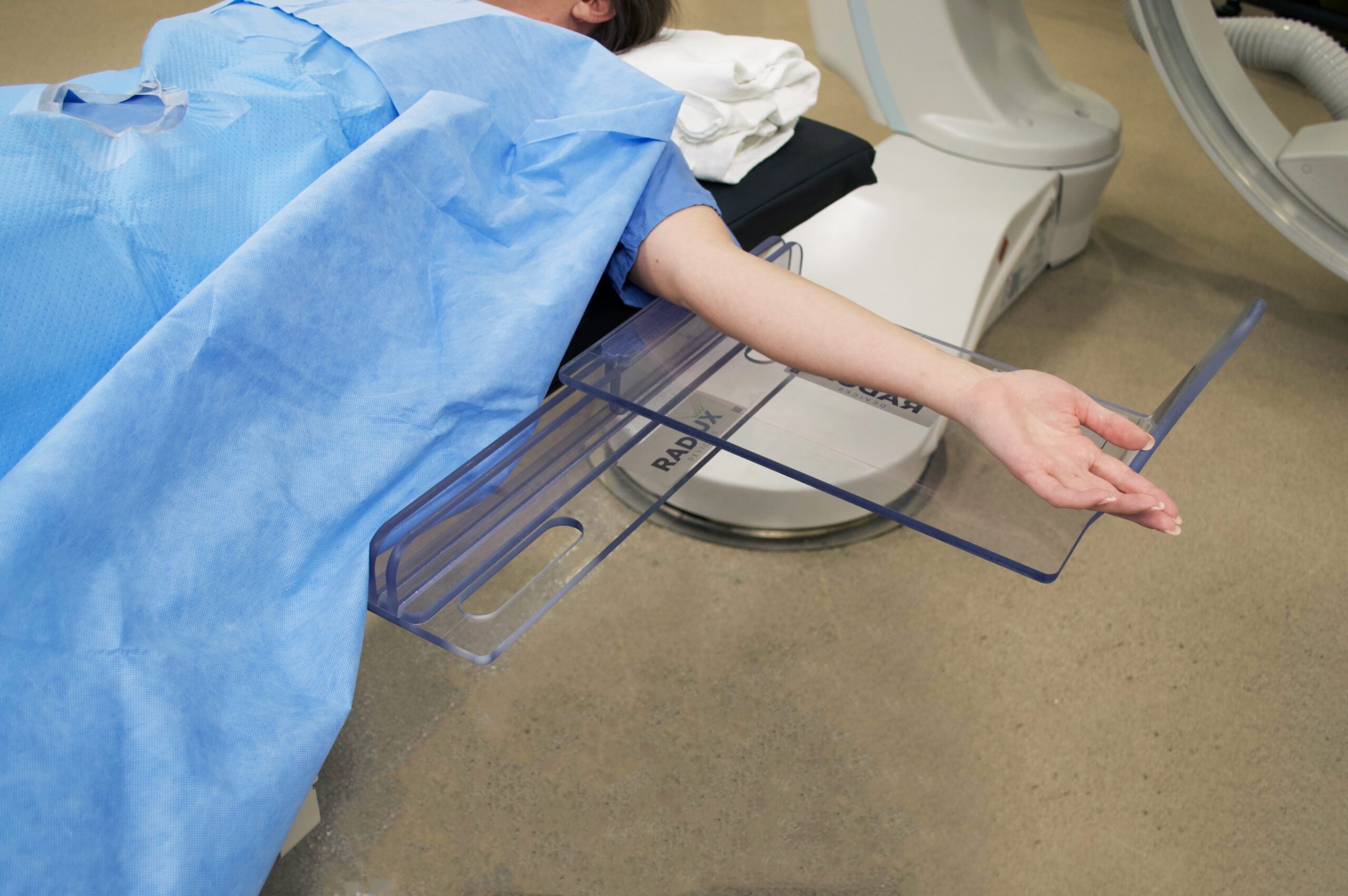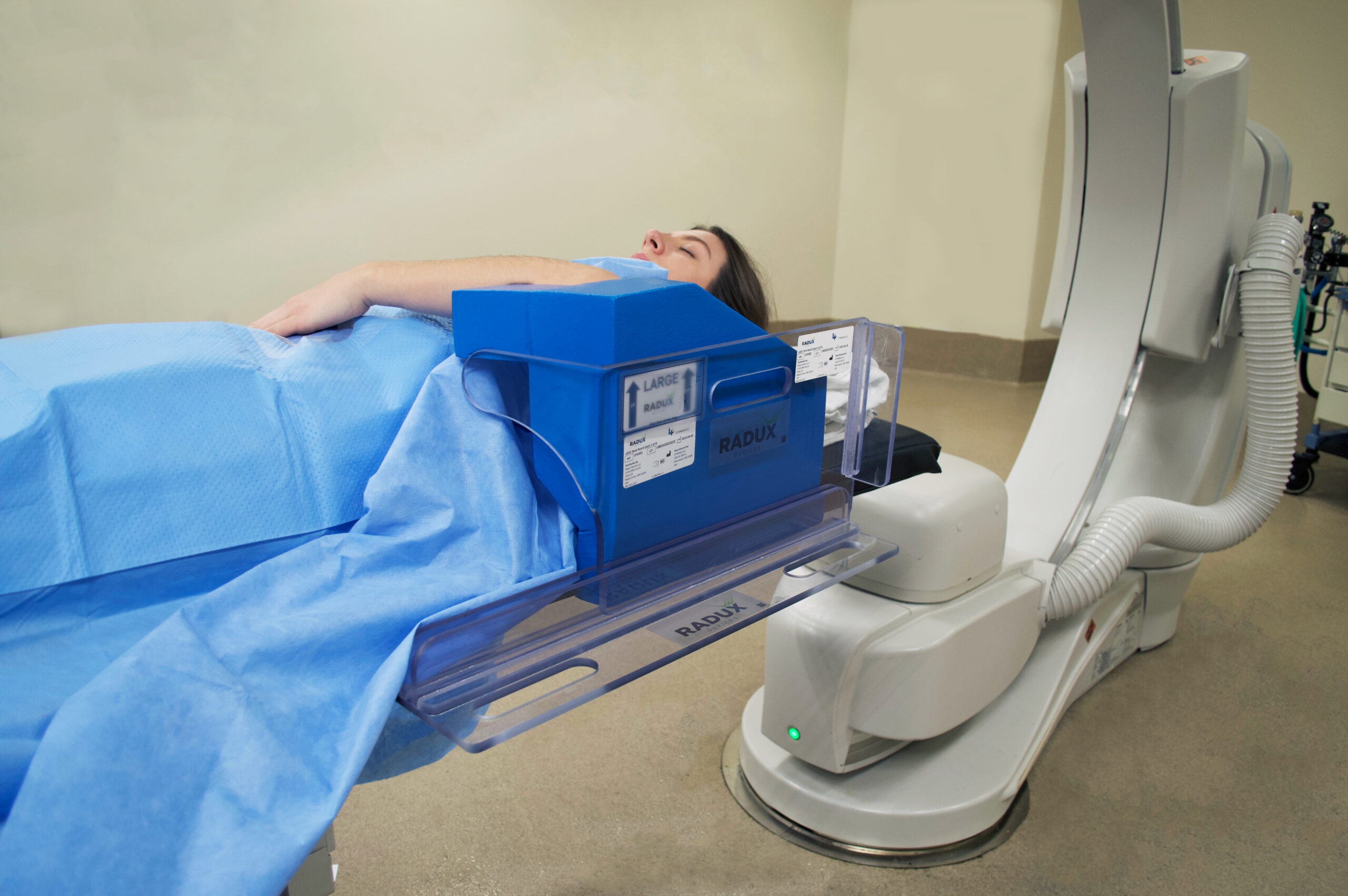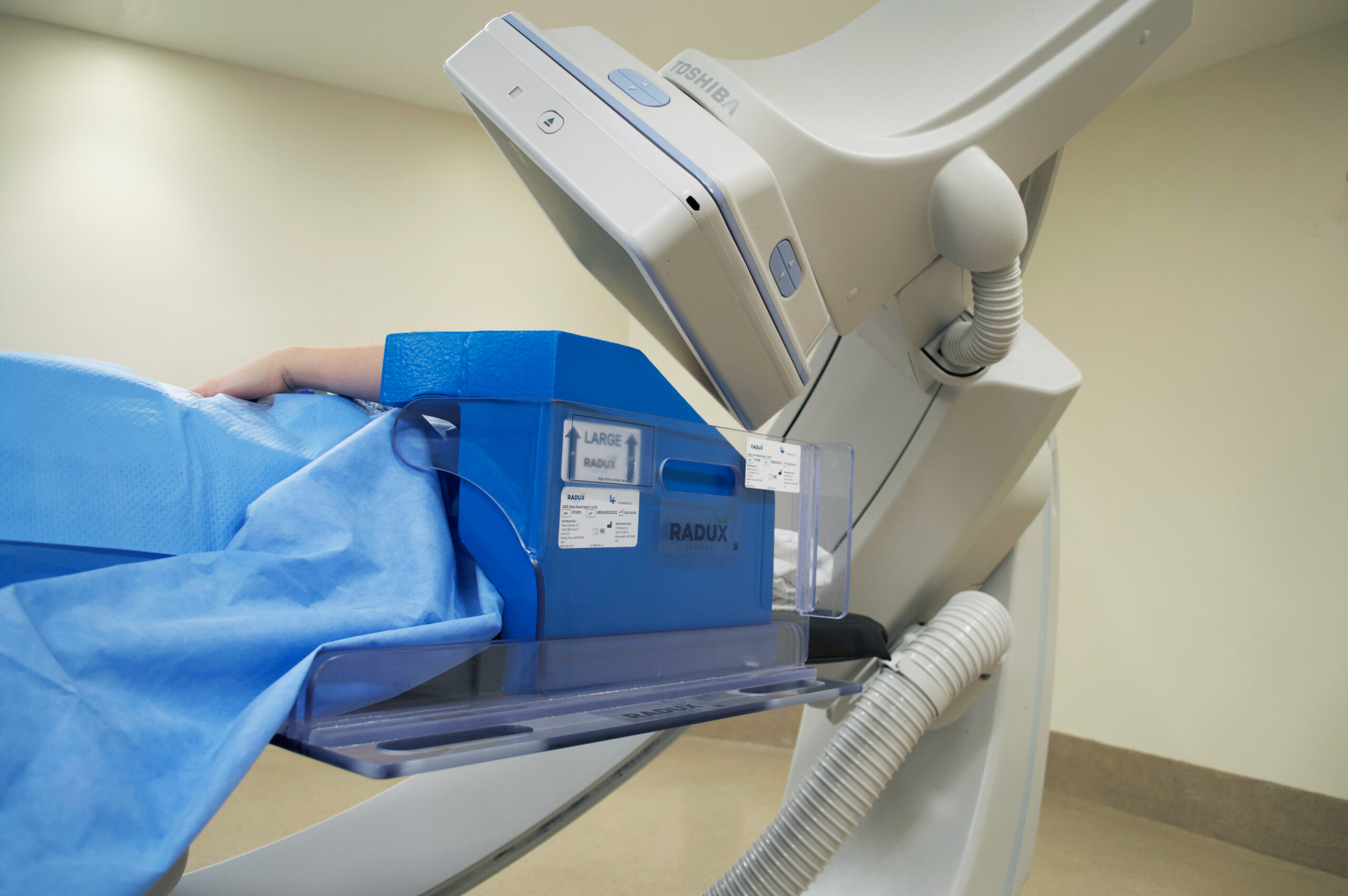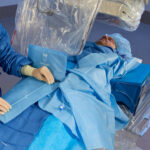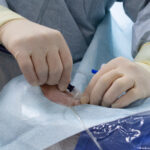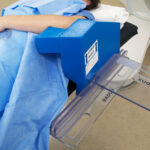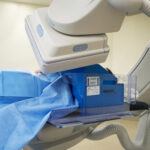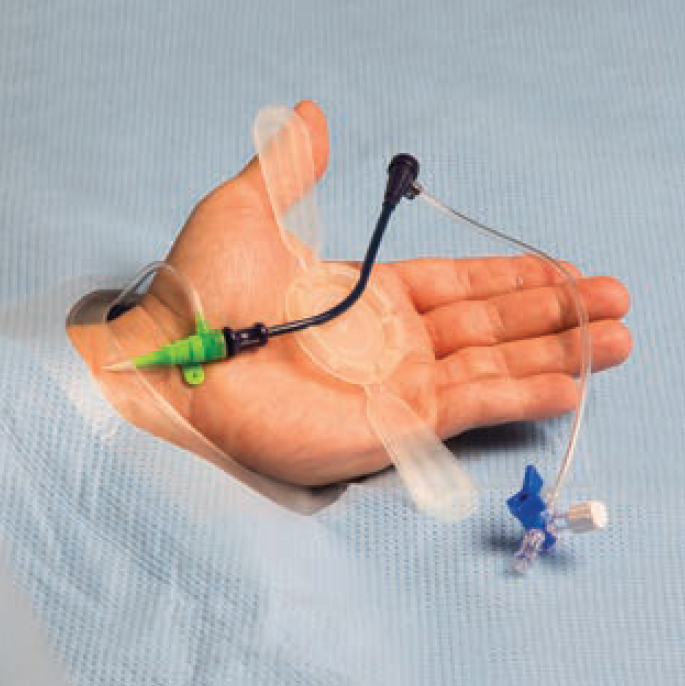Left Radial System
Radux Devices created the Left Radial System to address the common ergonomic and workflow challenges associated with Left Radial and Ulnar Vascular Access. Combining the benefits of StandTall™, an external vascular sheath extender, with LASS, a body positioning set, creates a Left Radial System that improves vascular access, site stability and reproducibility, while maximizing comfort for both the physician and the patient.
MAKING LEFT RIGHT – FOR YOU
With the StandTall™ + LASS, you get easy vascular access from the left radial artery, and improved comfort and stability. Leverage the Radux Devices Left Radial System to realize a complete suite of benefits:
Physician Benefits
- Reduced musculoskeletal stress and fatigue
- Redirects workflow to work on right side of table
- Increased vascular site access and stability
- Improved patient management and reproducibility
Patient Benefits
- Supported pronated arm position for superior comfort
- Faster reperfusion, recovery time
- Nondominated left hand accessed for cases (90% of population is right-handed)
- Improved patient satisfaction metrics
Hospital Benefits
- Reduced patient complications
- Reduced costs vs. femoral procedures
- Reduced postoperative patient management
- Reduced physician work-related absences due to repetitive MSK-stress injuries
TAKE ADVANTAGE OF THE LEFT RADIAL SYSTEM
For your convenience, the Radux Devices Left Radial System improves left radial access, site stability and procedural reproducibility, while maximizing comfort for you and your patients. Contact us today to learn more or give us a call at 800-935-3137.
StandTall™
Stay Radial and Stand Tall
StandTall™ is an external vascular sheath extender designed to overcome the ergonomic limitations of challenging access-site procedures. The measurable advantages of this device provide the physician with a more comfortable posture, thereby reducing musculoskeletal stress and fatigue.
In addition, StandTall™ simultaneously decreases radiation exposure, and creates a more stable workflow environment. The StandTall™ inner diameter measures 8.3 Fr and comes in 10 cm, 15 cm and 25 cm lengths to match individual patient anatomy and your preferred catheter system.
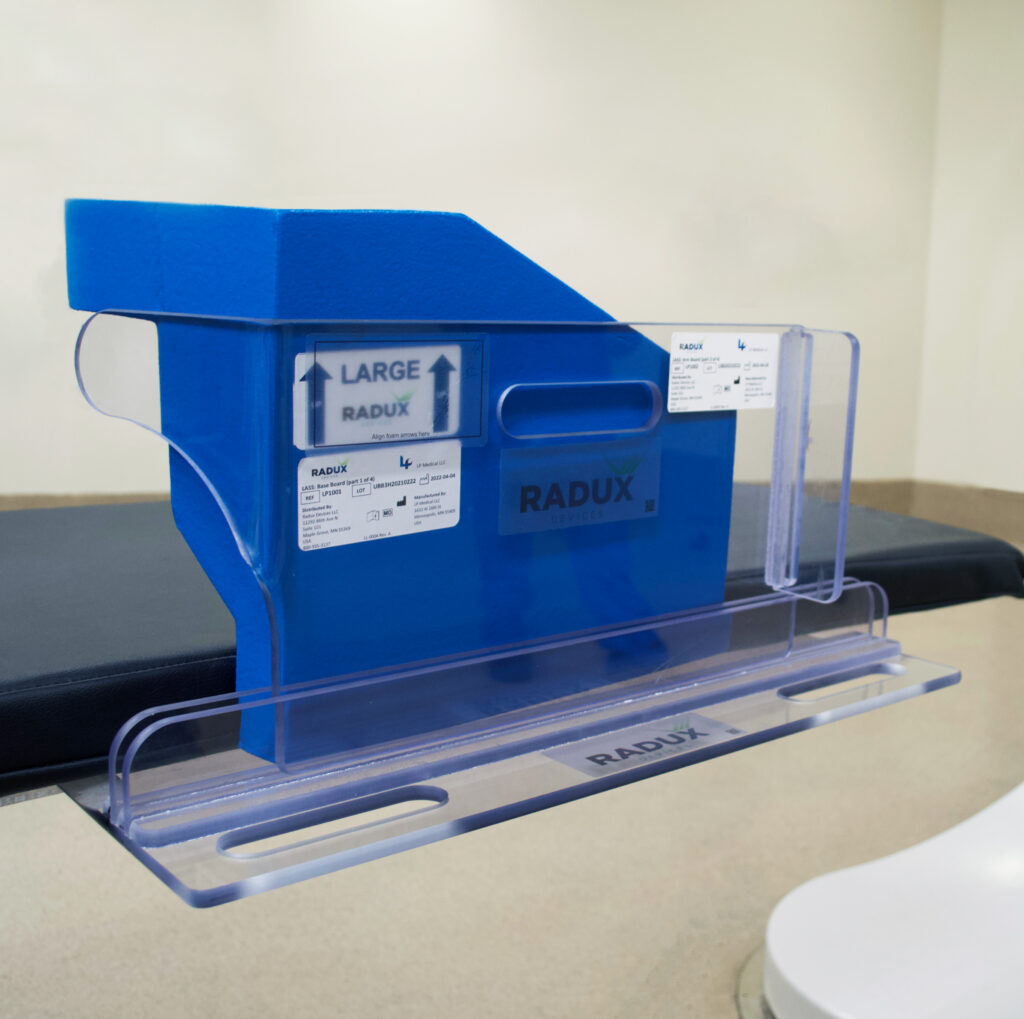
LASS
Improve Access and Stability
LASS is an easy to use, easy to clean and reusable body positioning set. A two-stage product, LASS sets up in less than a minute, and functions both as a left arm board and left arm support for superior stability and arm pronation for patients of all sizes.
Each LASS comes with 4 parts: a base board, an arm board, a large foam insert, and a small foam insert. When using LASS, select either the large or the small foam insert based on best fit for individual patient anatomy.
Additional Product Images




